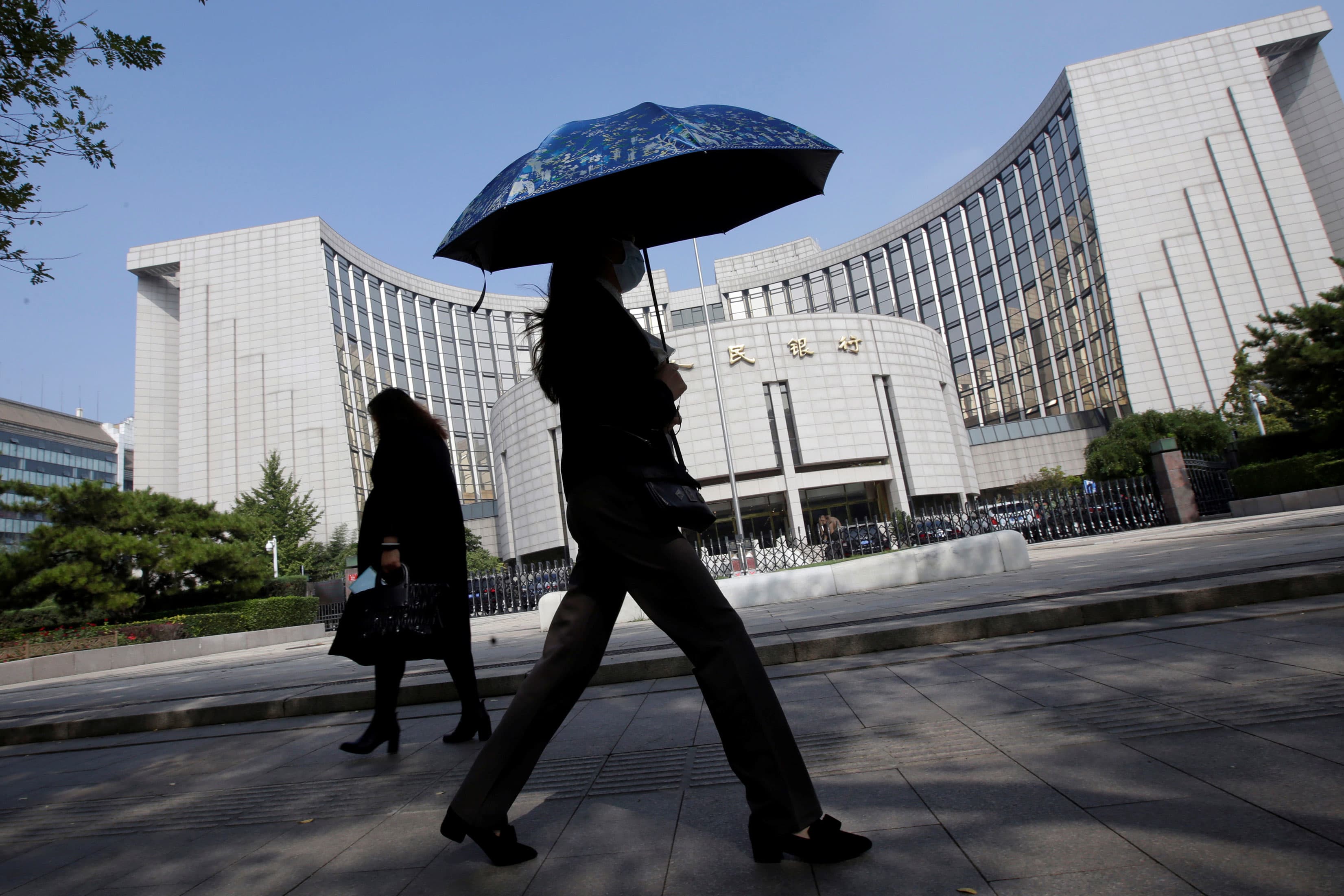BEIJING — China’s central bank policymakers pushed back Tuesday on expectations they would take aggressive measures to boost economic growth.
“China’s monetary policy remains within a normal range,” said Pan Gongsheng, a vice governor at the People’s Bank of China and head of the State Administration of Foreign Exchange.
He added that China would not embark on large-scale, flood-like stimulus. That’s according to a CNBC translation of his Chinese remarks released on the central bank’s website.
The Shanghai composite was little changed as of the end of the Wednesday morning trading session, after two straight days of gains of more than 1% each.
The yield on China’s 10-year government bond traded near 2.86%.
Nomura’s chief China economist, Ting Lu, noted that the yield on China’s 10-year government bond had ticked higher to 2.87% from 2.85% late Tuesday as markets interpreted additional policymaker comments “as a signal of less monetary easing.”
“Current conditions may not require as much liquidity as before to keep money market interest rates operating stably,” Sun Guofeng, head of the central bank’s monetary policy, said, according to a CNBC translation.
Sun added the central bank has “sufficient tools” to ensure market liquidity.
China’s central bank uses a variety of measures, rather than one primary rate, to implement monetary policy. The PBoC cut the reserve requirement ratio, the amount banks need to hold on reserve, in July for the first time since April 2020. However, a benchmark interest rate, the loan prime rate, has remained the same for 16-straight months.
Last week, the top executive body, the State Council, said the central bank would release an additional 300 billion yuan ($46.5 billion) for banks to loan to small and medium-sized businesses.
“These [central bank] comments reduce the odds of an imminent, aggressive policy easing given that the PBoC appears to be at ease with the current liquidity condition and the level of interest rates,” Aidan Yao, senior emerging Asia economist at AXA Investment Managers, said in a statement.
“Overall, Sun’s comments suggest that the PBoC has not altered its prudent policy stance despite stiffened economic headwinds,” Yao said.
Chinese trade data for August came in far better than expected on Tuesday, with exports surging 25.6% and imports — a sign of domestic demand — climbing 33.1% from a year ago.
Other economic reports have showed slowing growth in the last few months, especially in late July and August as China battled its largest outbreak of the coronavirus since the initial onset of the pandemic in early 2020.
Retail sales and other data for August are set for release on Sept. 15.
Growth will be under pressure in the third quarter, Xu Hongcai, deputy director of the Economics Policy Commission at the China Association of Policy Science, said in a phone interview, according to a CNBC translation of his Mandarin-language remarks.
He noted that exports cannot sustain growth in the long-term, and the economy needs to rely more on consumption and industrial investment, both of which have lagged.
But the central banks’ commentary reflects overall stability in the economy, Xu said, and he expects government spending and other fiscal policy measures will play a greater role in stimulating the economy in the next few months.
